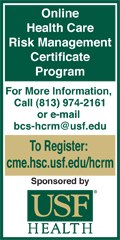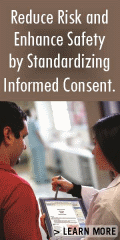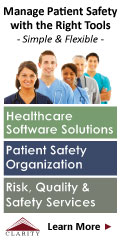 |
 |
 |

May / June 2006

The DUN Factor
The Six Factors of Communication Risk
Cultural/Ethnic Factors
The U.S., Canada, Great Britain, and most of Western Europe are increasingly multi-racial, multi-cultural, and multi-lingual. Yet healthcare, in each of these countries, tends to be delivered by individuals who speak in their native language (e.g. English in the US, Canada, and Great Britain, German in Germany, etc.) and who largely practice Western medicine steeped in Western ethics and tradition. Healthcare practitioners may be ignorant of, or minimize or ignore the influence of culture or ethnicity in the delivery of care, in part due to the ethnocentric belief that Western medical practices are the "best." This can lead to real difficulties in the treatment of patients, and negatively affect outcome, compliance being perhaps the most obvious issue.
Hispanics have rapidly become the largest minority group in the U.S. Increasingly, non-Spanish speaking healthcare practitioners will be confronted with non-English, Spanish speaking patients, generating the most obvious of the communication barriers: different languages.
Subtler are issues of folk remedies that, if a practitioner is unaware of or ignores, can be overtly dangerous. For example, a Mexican folk remedy for empacho (stomach pains) includes greta (a yellow to grayish-yellow powder), that is high in elemental lead... obviously, not a good thing. In such circumstances, simply knowing to ask about folk remedies — a knowledge-based, culturally specific communication skill — becomes key.
Cultural/ethnic factors can affect the physician-patient relationship in different ways. Many cultures, including some Asian and Native Americans, operate with a belief that anything told to them in an informed consent process actually increases the likelihood of the event occurring. In other words, informing an Asian or Native American patient that death is a potential outcome of a procedure, even if a remote possibility, in the patient's mind, makes this outcome more likely, if not probable. Such beliefs can create problems when a Western-trained physician must obtain an informed consent. While informed consent is considered a standard practice in Western medicine, it can clearly affect outcomes if used without regard to important cultural beliefs. Whether Western practitioners believe it or not, the mind has a powerful effect on determining outcome, even when procedures have been completed with technical perfection. Further, Native Americans may balk at signing anything due to the long history of whites repeatedly violating agreements spelled-out in documents (i.e. treaties). All of these issues require awareness and skillful communication to detect and avoid problems and enhance outcome.
Socioeconomic Factors
Access to care is certainly affected by the socioeconomic level of an individual, but can also influence an individual's ability to communicate and comprehend information. While this factor may be linked to both culture/ethnicity and literacy, it can have an independent effect on communication. Physicians may believe that "my time is more important than the patient's," a view resulting from a different socioeconomic perspective than the patient. Waitzkin outlined the importance of different social backgrounds and significant problems with doctor-patient communication:1
Social structural barriers impede effective communication, however, and information giving remains problematic. Doctors tend to underestimate patients' desire for information and to misperceive the process of information giving. The transmission of information is related to characteristics of patients (sex, education, social class, and prognosis), doctors (social class background, income, and perception of patients' desire for information), and the clinical situation (number of patients seen). Doctors' nonverbal communication abilities are associated with outcomes of medical care such as satisfaction and compliance. Regarding the sociolinguistic structure of communication, doctors often maintain a style of high control, which involves many doctor-initiated questions, interruptions, and neglect of patients' "life world."
Physicians may assume that patients of a lower socioeconomic group either desire less information, or are less likely to understand information provided. This is a dangerous assumption. Comprehension of the listener is clearly affected by the physician's sociolinguistic structure, which, due to the oft-broad educational differences, may be poorly or partially understood, if for no other reason than word choice. This can be true with fellow healthcare team members, as well as patients. Further, in the face of a poor or incomplete understanding, a patient, and even fellow healthcare team members, will often not ask for clarification (or simplification), as they want to avoid appearing ignorant. This is especially true of patients with low literacy. The implications of this situation, in terms of treatment compliance and outcome, and therefore patient safety, are obvious. In the case of fellow healthcare team members, it also has very real potential to negatively affect outcome and create safety problems. In a survey of over 2000 nurses, pharmacists, and other healthcare providers, 40% said that in the last year, they overlooked a concern about a potential medication error in order to avoid calling the prescribing physician.2 While this is at least in part related to the physician's behavior (i.e. the manner in which they treat fellow team members), it may also be related to the sociolinguistic structure, and wanting to avoid appearing ignorant.
Gender Factors
In a survey of 9,250 physicians who had been insured for malpractice for at least two years, male physicians were three times as likely to be in a high-claims group as were their female physician counterparts, even after adjusting for years at risk and other demographic variables. The authors conclude: "We suspect that the most likely explanation for this finding is that women interact more effectively with patients."3
In a separate study of 667 graduates of Jefferson Medical College, it was found that "women, in general, valued psychosocial aspects of medical care higher than did men." In this same study, paradoxically, men considered "interpersonal interactions" as being the least problematic to them.4 This is a classic case of lack of perception of importance of relationships, as well as personal ability, and being of the male gender apparently exacerbates it!
The lack of perception of communication effectiveness was dramatically noted in a focus group of nearly all male physicians. When asked the question "Is effective communication an important component in the doctor-patient relationship," 100% of the participants enthusiastically responded "Yes!" When asked the follow-up question of "Do you think you could benefit from an training program to improve your communication skills," 100% said "No!"
These two studies, in essence, support the impression that females are more effective communicators. While the focus of the studies was primarily focused on malpractice liability, we know that communication is also the cause for most patient safety breeches as well. One must wonder whether female physicians have fewer patient safety problems than their male counterparts.
Women physicians may be better able to relate to patients. It has been noted that: "Most women want the kinds of connections with others that allow them to hear and understand the perceptions and desires of others, and in which the other person is able to hear their perceptions and desires. Emerging out of the psychological experience, most women feel a greater sense of well being, self-worth and effectiveness if they feel their actions arise from a context of relationship and, in turn, lead on to a greater sense of connection with others, as opposed to a sense of distance or so-called 'independence.' This is to say that women feel better and more worthwhile if we feel that our activities have come out of the interchange and workings of a relationship."5 Importantly, when the physician is male, the female patient brings these needs to the relationship. An important question becomes: Is their need for effective communication being met? If not, what implications does it have in terms of safety, compliance, and liability?
Few would deny, if only from daily experience, that women are better communicators and also tend to be more likely to pursue clarifications during the communication process than their male counterparts. They listen more intently. It is also true that most physicians in the US are still male (although this is changing). It's a set-up for gender-based misunderstandings, disappointment, and even anger. Male physicians I have personally encountered in my presentations and consulting engagements often say "I don't have time for all that touchy-feely stuff!" My question back to them is "Do you have the time (and money) for a lawsuit?"
Literacy Factors
One of every five patients walking into a physician's office or hospital cannot read well enough to interpret a bus schedule. That's 20%! It is not a leap to assume these individuals may have difficulty understanding and acting on healthcare information, especially in light of Waitzkin's work noted in socioeconomic factors, and the physician's "style of high control." Further, the lack of insight we see in male physicians regarding their communication effectiveness seen in the gender factors section above is observed in the low literate population as related to being aware of deficiencies. The approximately 90 million adults who perform at the lowest two levels of literacy do not necessarily perceive themselves as being of low literacy; 66 to 75 percent of the adults in the lowest level and 93 to 97 percent in the second lowest level described themselves as being able to read or write English "well" or "very well." It's either a case of not knowing what they don't know or being embarrassed to admit it. Either way this is concerning because some individuals may be intimidated such that they won't ask questions in the face of uncertainty, while others mistakenly think they understand when in fact they may not understand and simply not realize it.
Personality/Behavioral Factors
Of all the Factors, the personality/behavioral factor can be the most difficult barrier in the communication process to overcome. Grumbach noted, after an extensive examination of the beneficial effect teamwork has on patient care, that a "number of barriers to [healthcare] team formation exist, chiefly related to the challenges of human relationships and personalities."6 And I have a sneaky suspicion that he wasn't referring to the nurses.
A study of disruptive physician behavior found that nearly one third of all nurses who left a hospital did so because of a disruptive physician.7 Over 90% of over 1200 of the individuals surveyed in this study had witnessed disruptive physician behavior, including yelling or raising the voice, disrespect, condescension, berating colleagues, berating patients, and use of abusive language. The survey mentioned earlier of over 2,000 pharmacists and nurses is even more shocking in regards to physician behavior and how it can stifle healthy communication and result in safety concerns.8 Nearly half (49%) of the respondents said a history of physician intimidation altered the way they asked for clarifications about medication orders. Almost 70% said that at least once in the past year a physician snapped "Just give what I ordered," when asked for clarifications or question about a script.
These issues are personality and behavioral-based: yelling, disrespect, condescension, intimidation, and abusive language. The problem with these behaviors is two-fold: 1) the behavior itself, and 2) the all to common unwillingness to confront the behavior. Unfortunately, if the individual is not confronted, the message sent to all healthcare team members in the organization is that there are no standards for behavior... you can get away with anything. This isn't exactly the behavior one would hope for from the team leader. There are clear correlations between the leader's behavior, team effectiveness, and success. We all have heard of or had personal experience with team members who didn't want to "bother" the doctor, primarily out of fear for the reaction that the telephone call might prompt. A physician's behavior and team leadership have a dramatic effect on the entire team, and can be felt throughout the organization, often referred to as the "organizational tone."
The patient safety issues emanating from this Factor are highlighted clearly above. While perhaps not as obvious, individuals with behavioral problems have a higher liability, while increasing organizational liability too.
Time/Urgency Factor
Nowhere in all of economics is the problem of On the folly of rewarding for A while hoping for B, as defined by Steven Kerr9, more apparent than in healthcare- especially with physician income. Kerr describes organizations that profess to encourage employees to adopt certain behaviors, while compensating for behaviors contrary to what they say they want. Medicine is the classic example. The profession states it is one driven by the qualities of compassion, caring, and patient-centered focus, yet the system rewards physicians on the basis of production, that is, the volume of patients seen. How can one deliver compassionate care, communicate effectively, and be patient-centered when patients are scheduled every 5 minutes? I've seen an orthopedic surgeon schedule patients in the office every 2 minutes! It is the folly of rewarding for A (productivity) while hoping for B (compassionate caring, effective communication and patient-centeredness). Without the system changing, or physicians changing their income expectations (and hence their behaviors related to patient care), this cycle will see no end. Patient satisfaction will continue to plummet and physician liability skyrocket.
It is this single-minded productivity focus that has resulted in a sense of urgency in a physician's office, and reduced communication effectiveness not only between the patient and physician, but between the physician and his or her staff. It is a set-up for misunderstandings, miscommunications, and errors, and it is no wonder that it can lead to patient safety issues, compliance failures, poorer outcomes, and increased liability.
The time/urgency factor can also result in fatigue, mental and physical. A hectic schedule associated with long hours is tiring for physician and staff alike. Tired people are less patient, more error-prone, and reduce the willingness of even the most altruistic individual to spend the time needed to communicate effectively. Anyone who has been through a residency knows this to be true.
Eliminating one's focus on productivity, and focusing on ensuring individuals have the information they need — accurate and clearly understood information — will result in enhanced outcomes and safety, and greater satisfaction for physicians and other healthcare team members.
- Waitzkin, H. (1984). Doctor-patient communication. Clinical implications of social scientific research. JAMA 252, 2441-2446.
- From ISMP in Private Practice Success, Sept. 2004.
- Taragin, M., et al. (1992, November). Physician demographics and the risk of medical malpractice. American Journal of Medicine 93(5), 537-42.
- Hojat, M., et al. (1995, April). Gender comparisons of young physicians' perceptions of their medical education, professional life, and practice: A follow-up study of Jefferson Medical College graduates. Academic Medicine 70(4), 305-12.
- Miller, J. (1986). Women administrators: New hope and new dilemmas. In Women physicians in leadership roles, Dickstein, L., & Nadelson, C. (Eds.). Washington, D.C.: American Psychiatric Press, Inc.
- Grumbach, K, & Bodenheimer, T. (2004) Can health care teams improve primary care practice? JAMA, 291(10).
- Rosenstein A. (2002). Nurse-physician relationships: Impact on nurse satisfaction and retention. American Journal of Nursing, 106(6):26-34.
- From ISMP in Private Practice Success, Sept. 2004.
- Academy of Management Executive, 1995 Vol. 9 No. I.
• Return to the feature story:

The DUN Factor: How Communication Complicates

the Patient Safety Movement
|
 |
 |
 |


















|
 |



